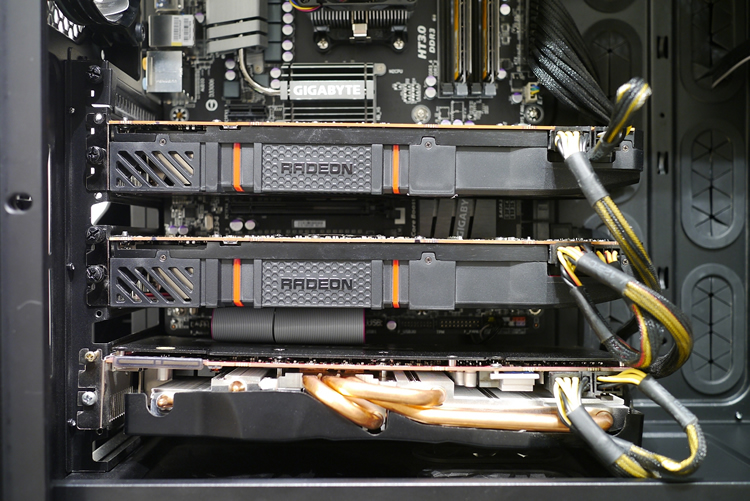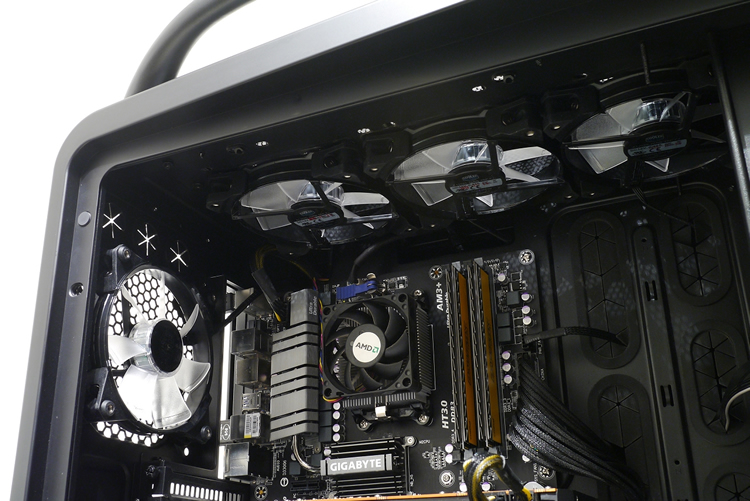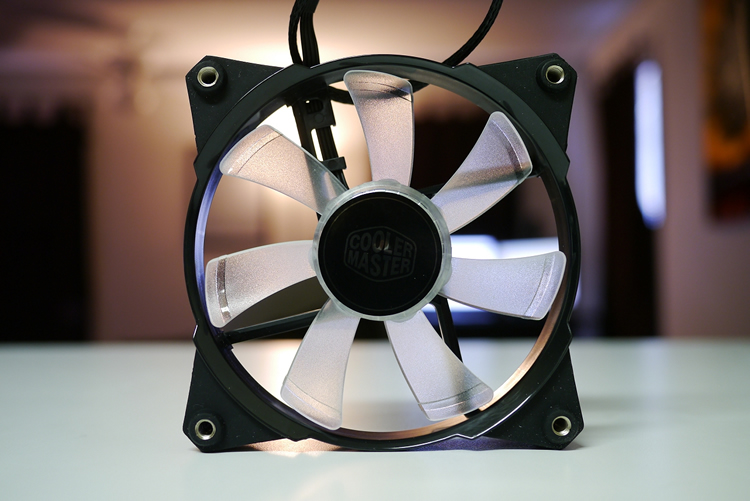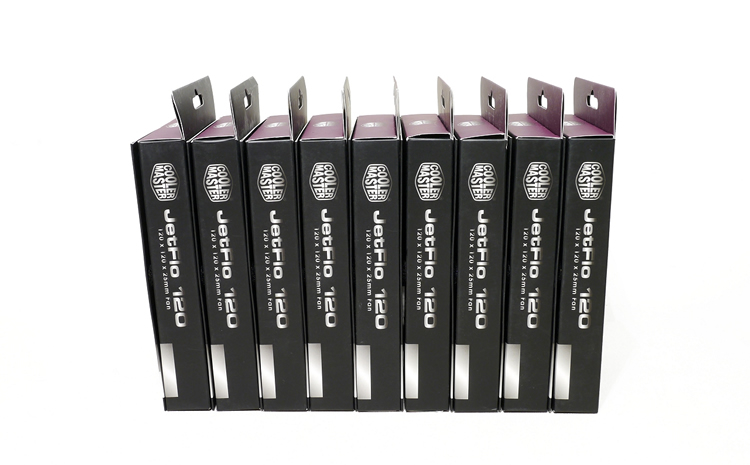It's hard not to be Complete Series Archivesintrigued by Bitcoin, the peer-to-peer digital currency devised by the mysterious Satoshi Nakamoto (presumably a pseudonym). The Bitcoin network went online in early 2009 as the first truly successful attempt at creating virtual money, though it earned little attention until last year when the currency's value jumped from $13 to $1,000 on public exchanges like BTC-E.
Many who mined early and actually kept their haul suddenly realized they were millionaires. Others kicked themselves for not jumping in sooner but one thing was clear: everyone wanted in on the action – and not necessarily to get rich quick. For hardware enthusiasts like me, it's just another opportunity to build and optimize a system, though I wouldn't complain about making a few bucks in the process.
There are two ways to get into Bitcoins: buy them or mine them. Mining Bitcoins takes a lot of effort (processing power) to create (mine) new currency. The underlying process behind mining is extremely complicated so for the sake of brevity, I'll skip most of the in-depth stuff and instead break it down into layman's terms. If you want the long version, I recommend reading this article by Michael Nielsen or watching this:
Essentially, processing power is used to solve complex math problems and miners who complete them first are rewarded Bitcoins. Early on, traditional desktop CPUs were used to solve these problems but as more people got into mining, more processing power was needed to achieve similar payouts. People quickly realized that GPUs could solve these problems at a 50 to 100 times faster rate than CPUs.
Despite boosting mining speed, GPUs proved less than ideal because of their power draw and resulting heat. Bitcoin miners eventually transitioned to FPGAs (Field Programmable Gate Arrays), which brought a five-fold improvement to consumption levels. By mid-2012, FPGAs lost appeal with the arrival of fully functional application-specific integrated circuit (ASIC) systems, today's standard for Bitcoin mining.
Needless to say, Bitcoin mining is now a serious endeavor and unless you're prepared to compete with professional mining operations like this guy, don't waste your time. Fortunately, however, Bitcoin's success has spawned many other virtual currencies, with nearly half a dozen deemed "major" cryptocurrencies on Wikipedia. Of those, Litecoin is among the most popular alternative to Bitcoin.

As its name suggests, Litecoin is based on Bitcoin's technology but differs in that it targets a faster block rate and uses scrypt as the proof-of-work scheme when mining. Unlike the Bitcoin network, which can only ever have 21 million coins, the Litecoin network will allow for 84 million coins to exist once they're all mined. To use a common analogy, people say Litecoin is the silver to Bitcoin's gold.
With the network still in relative infancy, Litecoin mining is still financially viable and is still best done using traditional desktop graphics cards because ASIC Litecoin miners don't exist (yet).
If you're looking to treat virtual coin mining as a hobby, Litecoins are probably the best bet right now and we'll show you how to get started with choosing and configuring the hardware and software you'll need. Also note we are aiming this article to PC enthusiasts who likely have spare hardware around, separating our project from milk crate builds, this seems like the most logical approach for us to get started.
Before you start building from scratch, I recommend taking inventory of your spare components. It also can't hurt to see if your friends or family have old parts. As a hardware enthusiast, I already had access to a case, retired hard drives (solid state drives are a waste here), an old optical drive as well as a spare keyboard. I also got an AMD Sempron 140 from a friend. As you'll soon learn CPU performance is mostly irrelevant.
GPUs are what matter if you want to mine Litecoins. The Litecoin Hardware Comparison Wiki offers a great comparison of mining performance but here's the short of it: forget about Nvidia and set your sights on AMD's Radeon R9 series. You'll get the best performance from a 290x card but it's also the most expensive. The 7950 is another popular choice but they're harder to come by with their age.

The R9 280x is currently regarded as the most popular choice for Litecoin mining in terms of price versus performance. Unfortunately, between holiday shoppers and coin miners buying up the R9 series, you can expect to pay a $100+ price premium than when the cards first launched. For a month or so, it was virtually impossible to find cards in stock at any major online retailer, but the market isn't quite as dry now.
I bought two 290x GPUs and a single 280x from three different manufacturers – not because I wanted different brands, but it's all I could get my hands on at the time. Specifically, I'm using a HIS 290x, another 290x from Sapphire and a PowerColor 280x. The two 290x cards are essentially identical as both are reference designs with AMD's cooling solution while the 280x has an aftermarket heatsink.

Surprisingly, most mining tutorials suggest putting your hardware in a plastic crate and cooling it with a box fan, but that didn't work for me at home. The case (or milk crate) you select will determine the capacity of your miner. I used Cooler Master's Cosmos II – partly because it's my favorite chassis but mostly because it's what I had on hand. Plus, it's a huge case and that means more GPUs fit.
With three R9 series cards in my miner, I opted for a motherboard with four PCIe x16 slots (Gigabyte's GA-990FXA-UD3). While your choice in memory isn't particularly important – I bought two 4GB sticks of Crucial Ballistix memory because it was on sale – you'll definitely want to research power supplies, compare the advertised wattage and 12v rail output with what your GPUs need.

I went for SilverStone's ST1500, a 1500W, 80 PLUS Silver unit. Aside from meeting my power needs, the ST1500's modular design is useful for maximizing airflow. I've had good luck with SilverStone PSUs over the years and this model proved no different. Whatever you do, don't skimp here. Get something rated for more than you'll need. You might be surprised at just how much power three high-end GPUs require.
These parts aren't necessary, but I found them worth buying. I picked up a single PCIe x16 riser cable to space out the cards as much as possible for cooling. I also bought the Tripp Lite UltraBlok Isobar protector, a Medialink Wireless-N USB adapter (Ethernet is fine, wireless was just more practical at my place), and a Kill-A-Watt electricity usage monitor to see exactly much power your miner is drawing.
After stripping it down, I upgraded the Cosmos II's preinstalled fans. I initially replaced the stock 200mm intake fan with a Spectre Pro from BitFenix which supposedly moves more air at 148.72 CFM @ 900 RPM. It was a letdown, however as the fan felt like it barely moved any air and as the main fan supplying air to the graphics cards, it wasn't enough.
I replaced BitFenix's fan with a 120mm x 38mm model 4715KL-04W-B49 from NMB – taken from a Dell tower server. What's more important than a specific fan recommendation here is noting that the noise of your chassis fans should be a secondary concern to their airflow, not least because your GPUs will likely be louder than any other fans, so don't be discouraged from using one with a high dBA rating.

Along with a second NMB fan (120mm x 25mm rated at 92 CFM) exhausting air from my GPUs out the left panel, I used three Cooler Master JetFlo 120s as top intakes, another as a rear exhaust, one in the front bottom as an intake and two more to blow air into the lower chamber for the power supply (picture below). This may not be an "ideal" layout on paper given that hot air rises, but this isn't a traditional build either.
I arrived at this configuration after countless hours of trial and error. Short of removing the side panel and using a box fan to flood the case with air, it's the best possible layout given the hardware and cooling I have on hand. If you can't keep temperatures under control with case fans, you can trim a few degrees off the top by replacing the GPU's stock thermal paste.


Keep in mind that if you're using a high-power fan, you'll want to attach it directly to your power supply instead of a motherboard header or a low-power fan controller to avoid damaging either.
 Apple iPhone 17 Pro leaks highlight major new design change
Apple iPhone 17 Pro leaks highlight major new design change
 Cruz Azul vs. Seattle Sounders 2025 livestream: Watch Concacaf Champions Cup for free
Cruz Azul vs. Seattle Sounders 2025 livestream: Watch Concacaf Champions Cup for free
 Southwest spring sale: $49 one
Southwest spring sale: $49 one
 ICC Champions Trophy 2025 livestream: How to watch ICC Champions Trophy for free
ICC Champions Trophy 2025 livestream: How to watch ICC Champions Trophy for free
 No Time for a Negative Peace
No Time for a Negative Peace
 Southwest spring sale: $49 one
Southwest spring sale: $49 one
 Google tracks Android users before they open apps, report says
Google tracks Android users before they open apps, report says
 Wordle today: The answer and hints for March 9, 2025
Wordle today: The answer and hints for March 9, 2025
 The strangeness of Japan's decision to start openly hunting whales
The strangeness of Japan's decision to start openly hunting whales
 'The White Lotus' Season 3 finally reveals why Rick's in Thailand
'The White Lotus' Season 3 finally reveals why Rick's in Thailand
 Big-League Bluster
Big-League Bluster
 Liverpool vs. PSG 2025 livestream: Watch Champions League for free
Liverpool vs. PSG 2025 livestream: Watch Champions League for free
 Best earbud deal: Get the Sony Inzone wireless gaming earbuds for their lowest price
Best earbud deal: Get the Sony Inzone wireless gaming earbuds for their lowest price
 NYT Connections Sports Edition hints and answers for March 10: Tips to solve Connections #168
NYT Connections Sports Edition hints and answers for March 10: Tips to solve Connections #168
 NYT Connections hints and answers for March 11: Tips to solve 'Connections' #639.
NYT Connections hints and answers for March 11: Tips to solve 'Connections' #639.
 NYT Connections Sports Edition hints and answers for March 11: Tips to solve Connections #168
NYT Connections Sports Edition hints and answers for March 11: Tips to solve Connections #168
 NYT Connections hints and answers for March 11: Tips to solve 'Connections' #639.
NYT Connections hints and answers for March 11: Tips to solve 'Connections' #639.
 Nintendo Switch 2 preorder just days away, per leak
Nintendo Switch 2 preorder just days away, per leak
 Wordle today: The answer and hints for March 10, 2025
Wordle today: The answer and hints for March 10, 2025
Introducing the Winners of the 2021 Whiting Awards by The Paris ReviewOn Memory and Motorcycles: An Interview with Rachel Kushner by Cornelia ChanningStaff Picks: Comma Splices, Nice Zones, and Ladies Alone by The Paris ReviewStaff Picks: Bars, Balzac, and Buses by The Paris ReviewPoems Are Spiritual Suitcases: An Interview with Spencer Reece by Jonathan FarmerRedux: Montaigne Was Right by The Paris ReviewLee Krasner’s Elegant Destructions by The Paris ReviewWhiting Awards 2021: Jordan E. Cooper, DramaA Taxonomy of Country Boys by Drew BratcherA Taxonomy of Country Boys by Drew BratcherImagining Nora Barnacle’s Love Letters to James Joyce by Nuala O’ConnorEvery Day Was Saturday in Harlem by The Paris ReviewHow to watch KU vs. OU basketball without cable: game time, streaming deals, and moreSheri Benning’s “Winter Sleep” by The Paris ReviewStaff Picks: Bars, Balzac, and Buses by The Paris ReviewThe Sphere during CES 2024: Android vs. iPhone'True Detective: Night Country' review: A can'tRedux: Her Perfume, HermitWhiting Awards 2021: Tope Folarin, FictionHow to contact Walmart customer service (Black Friday 2024) Prince George was so cute this year we can hardly bear it Beer infusions are taking the humble pint to new levels Sex, drugs and swearing: Here's how you could lose your Uber privileges Ikea is not OK with you sleeping over in its stores 10 marketing predictions for 2017 You can now use 3 new Snapchat filters while riding in an Uber 11 terrible beauty trends from 2016 that need to die 'Through the roof' Christmas trees are the season's most festive prank Supermodel Karlie Kloss gives you a 360 Here's the 'cat rapper' freestyling to his cat Ravioli during bathtime 11 tips for pooping at work when someone's in the next stall These Hogwarts House prints could be the perfect 'Harry Potter' Xmas present Machine learning will make sure no one steals your logo Inside Amazon's Prime Now warehouse the week before Christmas 9 times 'Planet Earth II' took 2016 by storm Fire station Christmas card features 6 super cute firefighter's babies 11 good things of 2016 Son travels 5,000 miles to surprise his mother, scares the sh*t out of her This online retailer is now selling cash! OMG, look at these original 'Legend of Zelda' design documents
2.756s , 10181.203125 kb
Copyright © 2025 Powered by 【Complete Series Archives】,Miracle Information Network